An efficient call center structure directly impacts key success metrics like First Call Resolution (FCR), customer satisfaction (Csat), and employee retention. Yet, many centers struggle to find the organizational design that truly supports peak performance.
At SQM Group, we’ve spent decades analyzing the relationship between call center structure and service quality. Our findings show that the most efficient call centers are those that align their structure with clear performance goals, empower their agents, and prioritize the customer journey.
In this blog, we’ll explore the most common call center structures, what makes a structure efficient, and how you can choose the right model to maximize your center’s success.
Why does Call Center Structure Matter?
The structure of a call center is more than just a diagram or an organizational chart — it's the foundation that supports every customer interaction and internal workflow. An effective structure ensures that the right people are in the right roles, that leadership is clear, and that processes are streamlined for speed and quality.
According to SQM Group’s research, high-performing call centers consistently demonstrate clear reporting lines, empowered frontline employees, and dedicated support teams focused on coaching and quality assurance.
What are Some Common Call Center Structures?
Each type of call center structure offers unique strengths and challenges depending on your call center’s size, goals, and customer needs.
1. Functional Structure
The functional structure is one of the most traditional models, organizing the call center based on specific roles and departments. Agents, team leads, supervisors, quality assurance analysts, and workforce management teams each have clearly defined responsibilities and report up a straightforward chain of command.
For example, a telecom company’s call center has separate teams for billing inquiries, technical support, and new account setup. Each department reports to a dedicated manager who oversees service quality and agent performance within their functional area.
The functional structure is best for traditional inbound call centers that prioritize consistency, specialization, and clear accountability.
Strengths of a Functional Structure:
- Clear role delineation
- Easier management of large agent pools
- Supports specialization in agent skillsets
Challenges:
- Can create communication silos between departments
- May slow down decision-making and innovation

2. Matrix Structure
In a matrix structure, employees generally have two managers instead of just one. They usually report to a functional manager (like a customer service supervisor) and also to a manager responsible for a specific product, project, or customer group. This setup allows call centers to handle different products, services, or customer types more flexibly, without splitting into completely separate departments.
A software company’s call center has agents trained both by a customer service supervisor and by product managers for each software suite. An agent might handle general support issues but also report into the team specializing in Enterprise Solutions.
A matrix call center structure is best for multichannel or multi-product environments that need flexibility across teams.
Strengths:
- Encourages collaboration between departments
- Improves agility for handling specialized customer needs
- Supports diversified services
Challenges:
- Potential for conflicting priorities between managers
- More complex communication and leadership dynamics
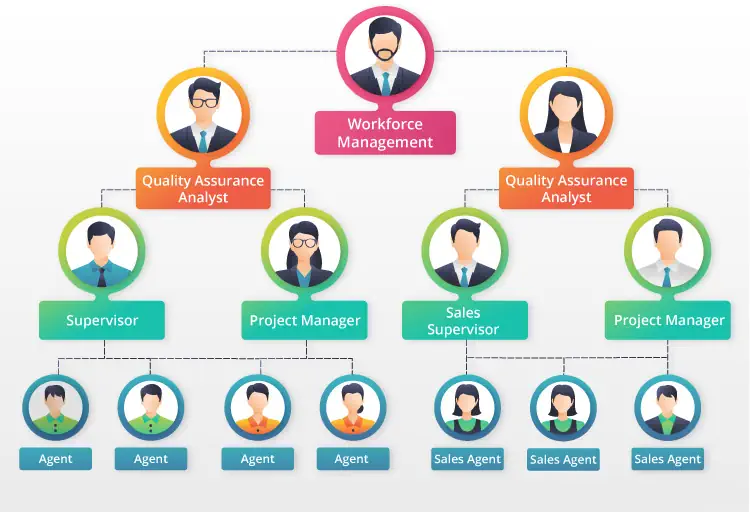
3. Flat Structure
A flat call center structure eliminates many layers of middle management, resulting in a leaner hierarchy where frontline agents have more autonomy and decision-making authority. Supervisors may oversee larger teams, or agents may operate more independently with access to self-coaching tools.
For example, an e-commerce startup has a small customer support team where agents manage their own tickets, suggest improvements directly to leadership, and collaborate informally instead of relying on a traditional supervisory chain.
A flat structure is best for small to mid-sized call centers, startups, or organizations embracing agile service models.
Strengths:
- Faster decision-making
- Higher agent empowerment and engagement
- Lower operational costs
Challenges:
- Risk of inconsistent service quality without strong coaching
- May overwhelm agents without sufficient support systems
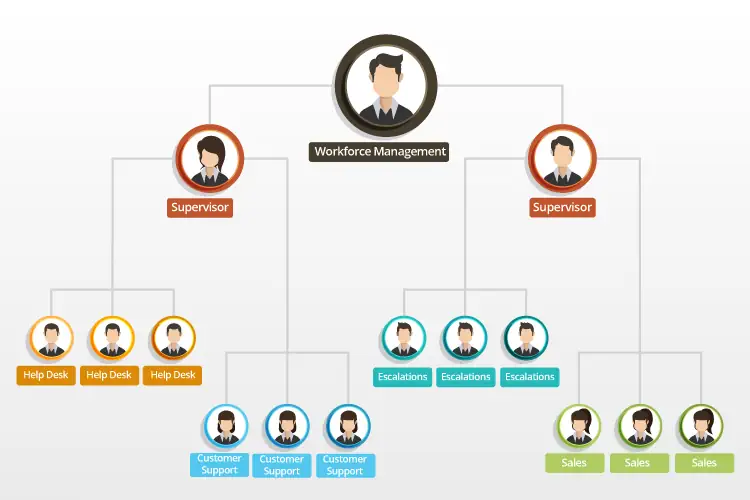
4. Pod or Team-Based Structure
In this model, agents are organized into small cross-functional teams or "pods," each responsible for a specific customer group, issue type, or service level. Pods often include agents, a dedicated coach, and access to real-time analytics specific to their group.
For example, a healthcare insurance company forms pods where each team handles only certain Medicare clients. Within the pod, agents handle all aspects of service — from enrollment to claims — supported by a coach who helps the pod maintain quality and efficiency.
A pod or team-based structure centers focused on personalized service, FCR improvement, and niche customer bases.
Strengths:
- Strong team accountability
- Improved FCR through ownership of the customer issue
- Enhanced collaboration and morale
Challenges:
- Requires robust training and ongoing coaching
- May lead to resource inefficiencies if not managed carefully
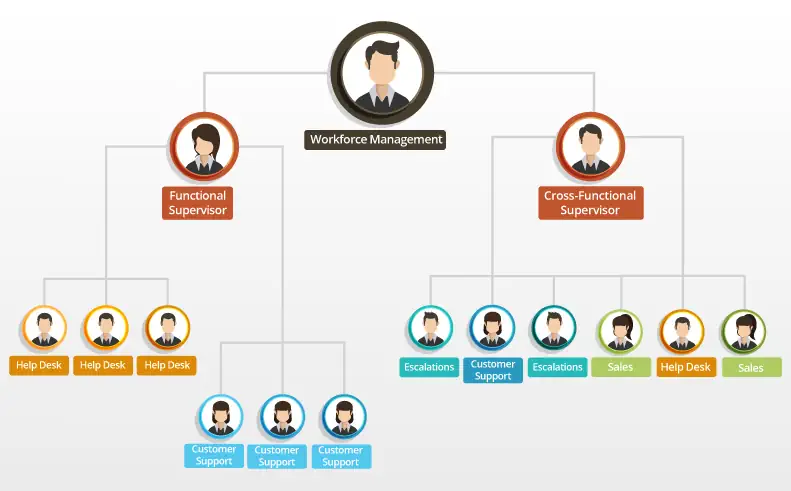
5. Outsourced / Hybrid Structure
An outsourced or hybrid structure involves a combination of in-house and third-party agents. Companies use this model to scale rapidly without bearing all the infrastructure costs, while keeping critical or complex interactions handled by internal teams.
For example, a retail brand uses a third-party vendor to handle basic order tracking calls during the holiday season, while their in-house team focuses on escalations, high-value customers, and complex issue resolution.
The outsourced structure is best for organizations experiencing rapid growth, seasonal volume spikes, or cost pressures.
Strengths:
- Scalability and flexibility
- Cost savings through third-party vendors
- Access to specialized skills for specific campaigns
Challenges:
- Risk of inconsistent customer experience
- Requires strong vendor management and training programs
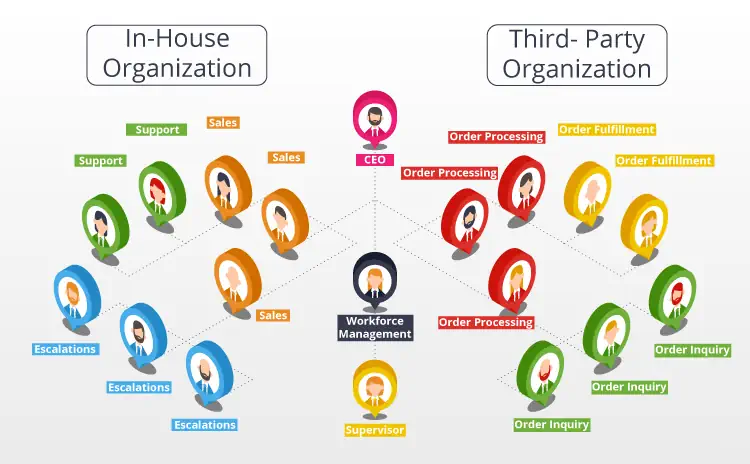
What Makes a Call Center Structure Efficient?
An efficient call center structure is about how well the structure enables your team to meet performance goals, deliver high-quality service, and respond quickly to customer needs.
Here are the core characteristics that define an efficient structure:
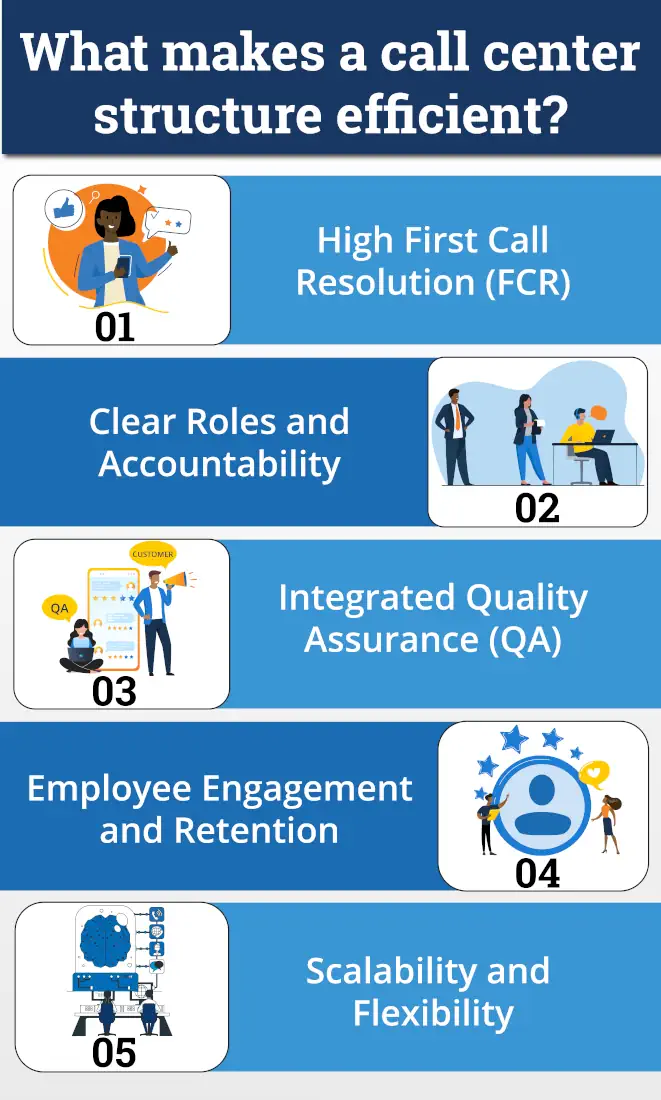

1. High First Call Resolution (FCR)
FCR is one of the most important metrics for measuring efficiency. A structure that supports FCR empowers agents to resolve issues without unnecessary transfers, escalations, or callbacks. Efficient structures reduce internal hand-offs by aligning agent skills with customer needs and providing access to the right tools and knowledge at the first point of contact.

2. Clear Roles and Accountability
In efficient structures, every employee understands their role and how it connects to broader team objectives. Supervisors aren’t just managers — they’re coaches who help agents improve performance. Support roles like QA and Workforce Management are integrated into daily workflows rather than siloed off in separate departments.
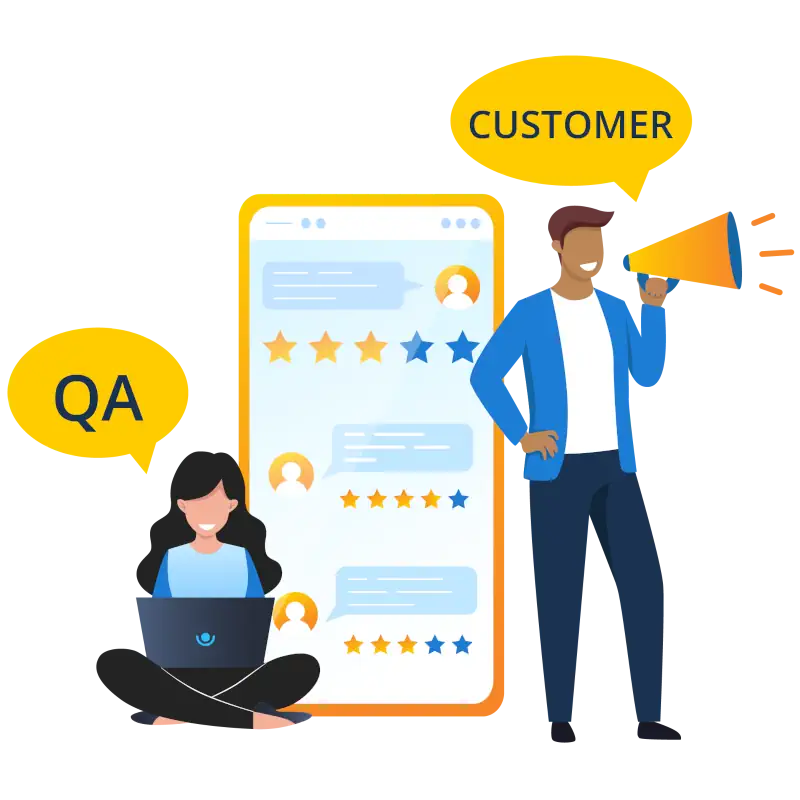
3. Integrated Quality Assurance (QA)
Top-performing call centers don’t treat QA as an afterthought. Instead, QA is built into the structure in a way that provides real-time feedback, actionable insights, and continuous coaching. When QA teams collaborate directly with supervisors and agents, service quality improves dramatically.
SQM's Post-Call CSat Prediction QA Model is designed to integrate seamlessly into any structure — empowering your team with real-time, customer-driven feedback that drives higher FCR and Csat. SQM’s QA Model can achieve up to a 95% match with traditional, survey-based agent CSat ratings.
High predictive accuracy is essential for improving call center operations because it allows managers to take a more proactive approach to QA. Instead of waiting for survey results, the model gives managers real-time insights into customer sentiment, allowing them to take immediate action.

4. Employee Engagement and Retention
Efficient call centers create structures that support agent development and reduce burnout. This means reasonable team sizes, regular coaching, and career development paths that are clear and attainable. When agents feel supported, they perform better — and stay longer.
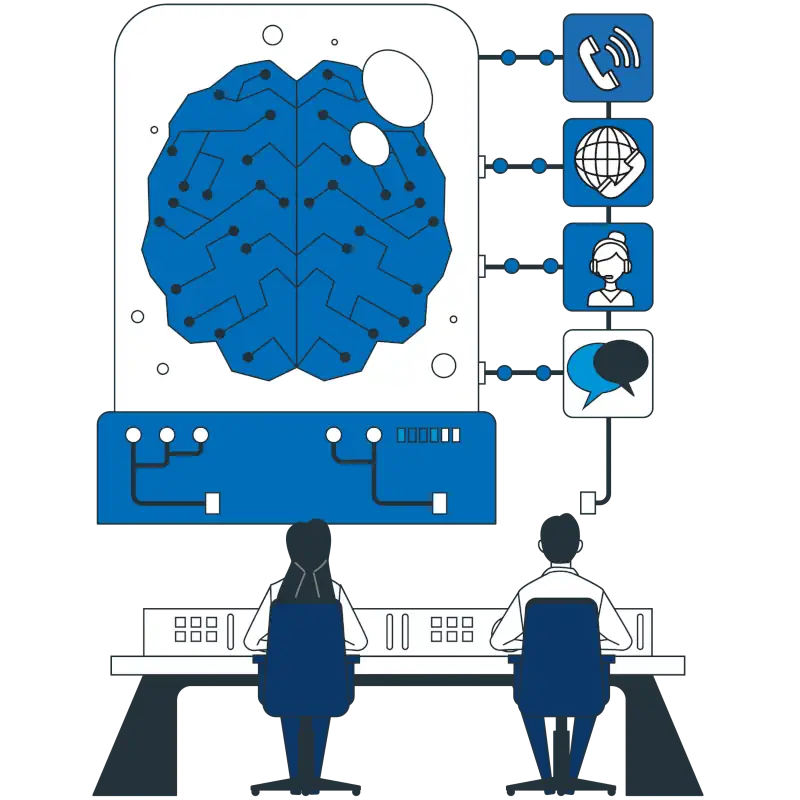
5. Scalability and Flexibility
A structure must be agile enough to scale during peak periods or adapt to new customer channels (like chat, SMS, or social media). Structures that lock teams into rigid roles or workflows can’t keep up with changing demand. Efficient centers build flexibility into their staffing models and training programs.
How Can You Choose the Right Structure for Your Call Center?
There’s no universal "best" call center structure — the right one depends on your business goals, customer expectations, and operational complexity. That said, the most effective structures are always aligned with key performance drivers like FCR, Csat, and employee engagement.
Here are some practical steps to help you choose or refine your structure:
1. Define Your Primary Objectives
Start by identifying what matters most. Are you aiming to improve customer satisfaction? Reduce costs? Expand support channels? Your structure should support your strategic priorities, not fight against them.
2. Understand Your Customers
Customer expectations vary widely by industry and service type. Do your customers value quick, transactional support — or are they looking for deep expertise and personalized care? Your structure should reflect the type of service your customers actually want.
3. Assess Your Call Center’s Maturity and Size
A flat structure might work for a small startup, but a larger center will need more formal layers and specialized teams. Likewise, as your service offerings grow, a pod or matrix model may better support product and channel diversity.
4. Evaluate Technology Alignment
Your structure should work hand-in-hand with your tech stack — not against it. For example, omnichannel platforms, knowledge bases, and performance dashboards can help smaller teams work like larger ones, but only if they're integrated into your workflows.
5. Build a Strong QA and Coaching Foundation
No matter which structure you choose, quality assurance must be embedded into daily operations — not siloed off. When QA is proactive and integrated, agents receive timely feedback and support that drives real improvement.
